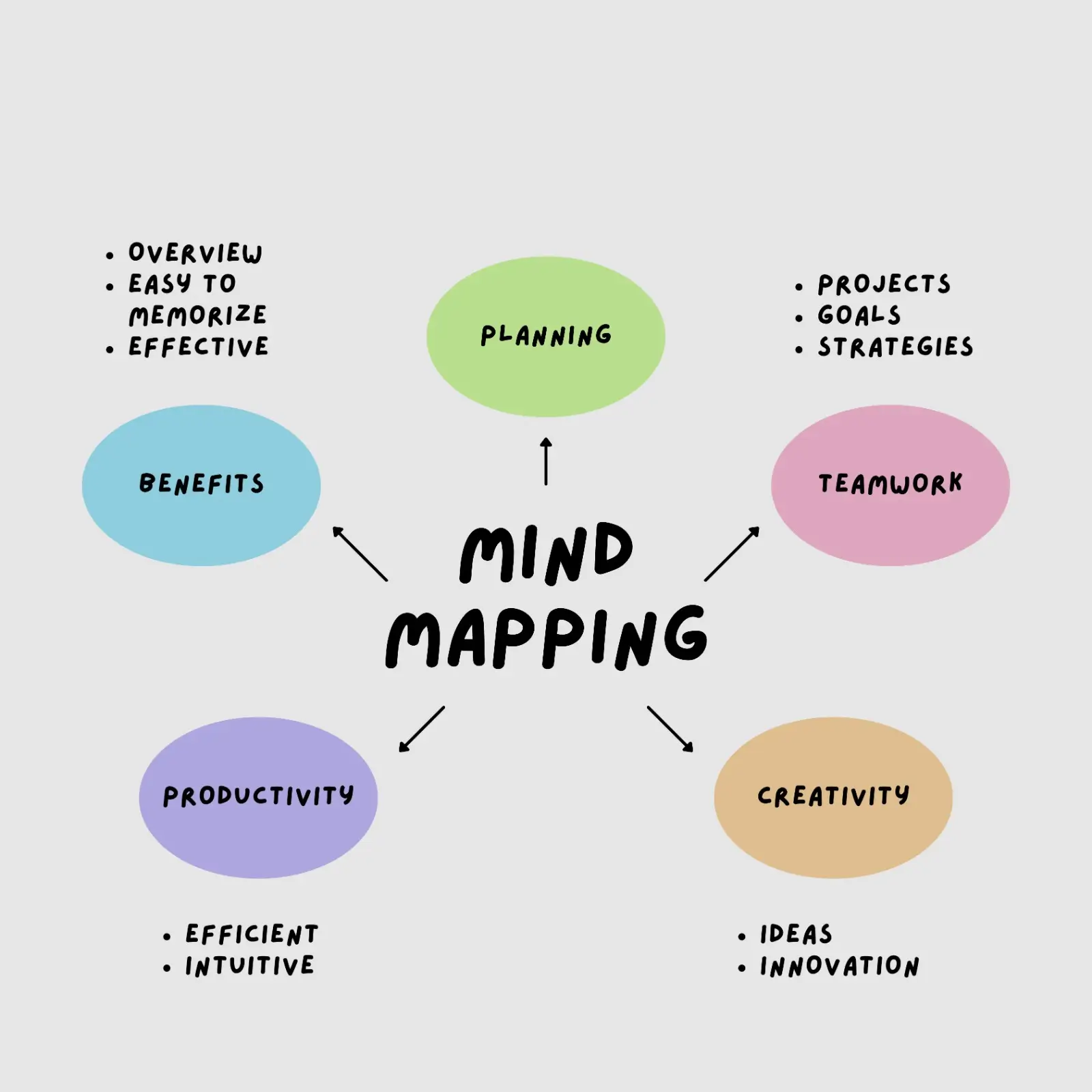 Home
Home
Clarify your thoughts and break large goals into workable pieces by pouring ideas into a mind map.

Our minds are always buzzing with ideas, concepts, and potential solutions to problems. Sometimes, though, we have so much happening in our heads that we cannot find or make sense of the right ideas, concepts, or solutions when we need them. For example, this often happens when we’re faced with a daunting task, and we don’t know where to start or what success looks like. Alternatively, we may find that our minds trouble us at inappropriate times, buzzing with details and questions about various projects on our radars. In these types of situations, mind mapping can be a helpful approach. ...
The goal of mind mapping is to pour the contents of your mind into an external format so that the stuff in your head is noted in a way that makes sense to you. This can help you be more creative and expansive in your thoughts. Mind mapping can also help you visualize and drill down into ideas and provides a helpful medium for sharing them with other people.
To generate a mind map, one option is to start with a plain piece of paper and write your end goal or primary topic in the center. Then, all over the paper, start jotting down all your thoughts and ideas about completing your goal or breaking down the central topic. You can draw lines to connect related ideas and concepts. Eventually, you’ll create a clear map of your thinking around this project.
Here’s an example to help you visualize how this works in practice. Let’s say you want to plan an event. There are many different tasks and activities that go into doing this; unless you record them, you can easily forget what you will need to do. To create a mind map, you will begin by writing the event’s title (e.g., “My fortieth birthday party”) in the center of a piece of paper. Then, you will allow your mind to flow through everything you need to do to plan the event. When a subproject or concept needs clarification, you can zoom into that and add related items.
A popular way to mind map is to use dedicated software or websites. These offer an easy way to electronically organize your mind maps and the ability to focus on parts of the mind map while hiding the irrelevant parts, as well as advanced categorization and search functions. Here’s an example of a birthday party mind map:
{INSERT GRAPHIC: birthday party map image}
As you can see, a mind map can quickly evolve into an organized reference, containing all the details you will need to consider when planning and holding your event. You can use this map to ensure nothing is left undone or forgotten.
 Home
Home

Don't have an account? Sign up
By creating an account, you are agreeing to our Terms of Use & Privacy Policy



